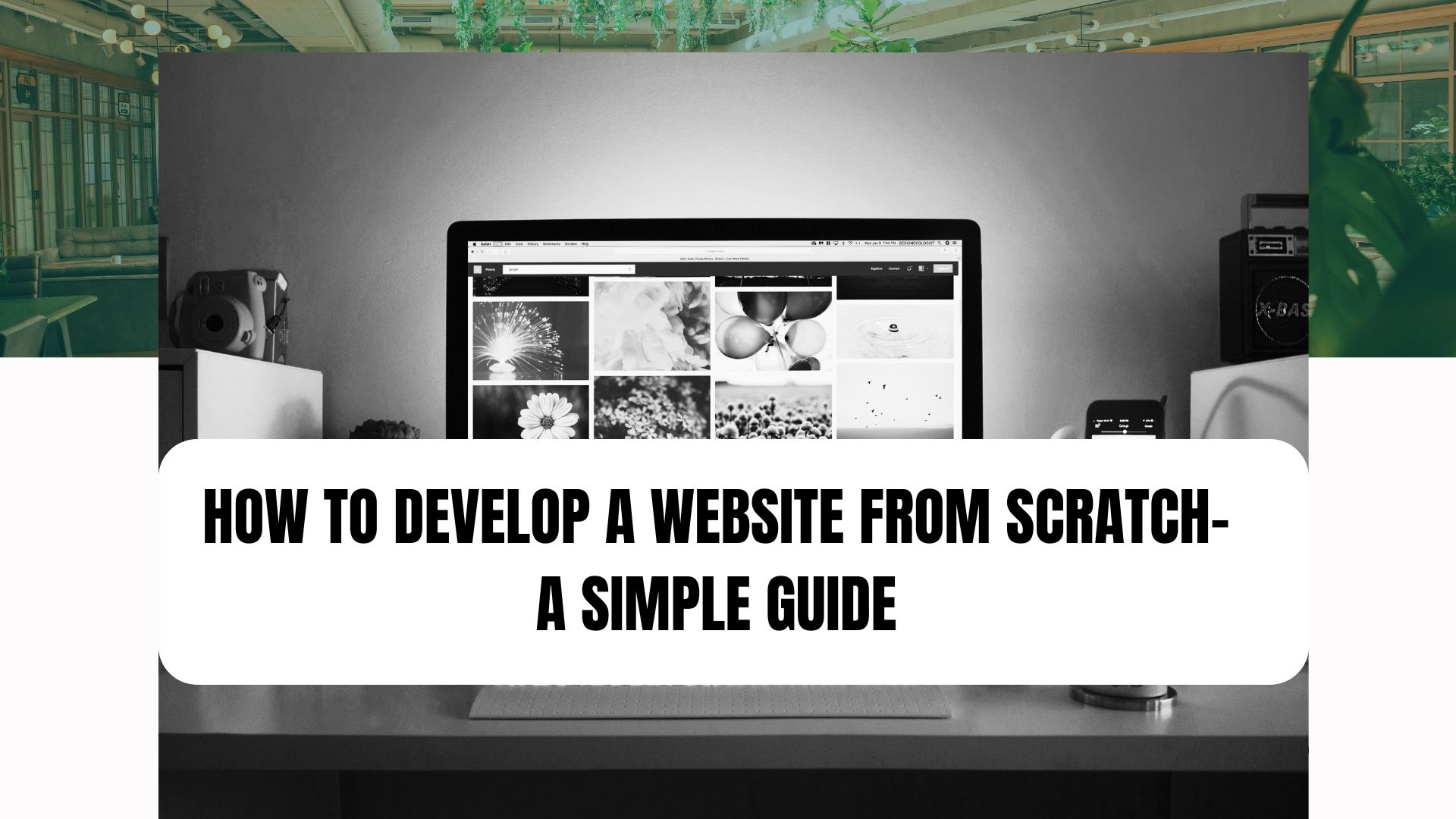How to Develop a Website from Scratch: A Simple Guide
 Nabeel
Nabeel
Hey there! If you’re looking to create your own website but feel overwhelmed by where to start, you’re in the right place. Whether you’re setting up a blog, an online store, or a personal portfolio, building a website from scratch might sound daunting, but it’s actually pretty straightforward if you break it down into manageable steps. Let’s dive in!
Why Build a Website?
Before we get into the nuts and bolts, let’s quickly cover why having a website is so important. A website serves as your digital storefront. It’s a place where people can learn more about you or your business, see your products or services, and get in touch with you. It’s an essential tool for anyone looking to build an online presence, whether you’re a freelancer, a small business owner, or just passionate about sharing your ideas with the world.
Step 1: Define Your Purpose and Goals
Before you start building, it’s crucial to understand why you’re creating the website and what you want to achieve with it. Here are some questions to consider:
What is the primary purpose of the site? Is it to sell products, showcase your work, or provide information?
Who is your target audience? Knowing your audience will guide the design and content of your site.
What features do you need? Will you need a contact form, a blog, or an online store?
Having clear goals will help you make informed decisions throughout the process.
Step 2: Choose a Domain Name and Hosting
Your domain name is your website’s address on the internet (like www.example.com). It’s important to choose a name that is memorable, easy to spell, and reflects your brand or purpose.
Once you’ve picked a domain name, you’ll need web hosting. Hosting is where your website lives on the internet. There are many hosting providers out there, such as Bluehost, SiteGround, and HostGator. Most hosting services offer a domain name as part of their package, so you can often handle both tasks in one go.
Step 3: Plan Your Website’s Structure
Before jumping into design, sketch out a basic plan for your website’s structure. Think about the main sections or pages you’ll need. Common pages include:
Home: The main landing page.
About: Information about you or your business.
Services/Products: Details about what you offer.
Blog: If you plan to share articles or updates.
Contact: A way for visitors to reach you.
Having a clear structure will make the design and content creation process smoother.
Step 4: Choose a Website Builder or Content Management System (CMS)
You have a couple of options for building your site: a website builder or a content management system (CMS).
Website Builders: Platforms like Wix, Squarespace, and Weebly offer easy drag-and-drop interfaces and are great for beginners. They come with built-in templates and hosting.
Content Management Systems (CMS): WordPress is the most popular CMS. It’s a bit more complex but offers greater flexibility and control. You’ll need to install it on your hosting server, but it’s highly customizable with themes and plugins.
Step 5: Design Your Website
Now for the fun part—designing your site! Here’s how to approach it:
Choose a Template or Theme: Most website builders and CMS platforms offer a range of templates or themes to start with. Pick one that fits your style and purpose.
Customize Your Design: Adjust colors, fonts, and layouts to match your brand. Ensure your design is clean, user-friendly, and mobile-responsive (i.e., it looks good on phones and tablets).
Add Visuals: Incorporate high-quality images and graphics that enhance your content and make your site visually appealing. Avoid using too many stock photos; original visuals can help you stand out.
Step 6: Create and Organize Content
Content is king! Your website needs compelling content that speaks to your audience. Here’s how to handle it:
Write Engaging Copy: Craft clear, concise, and engaging text for each page. Focus on what your visitors want to know and how you can help them.
Add Multimedia: Include images, videos, and infographics to make your content more engaging. Make sure they’re optimized for fast loading times.
Optimize for SEO: Use relevant keywords in your content to help search engines understand what your site is about. This will improve your site’s visibility in search results.
Step 7: Test and Launch
Before going live, thoroughly test your website. Check for:
Broken Links: Make sure all links work and lead to the correct pages.
Mobile Compatibility: Ensure your site looks good and functions well on mobile devices.
Loading Speed: Test how quickly your site loads and make adjustments if necessary.
Once you’re confident everything is in place, it’s time to launch your website! Announce it on your social media channels and let your audience know.
Step 8: Monitor and Maintain
Building your website is just the beginning. Regular maintenance is key to keeping it running smoothly:
Update Content: Keep your content fresh and relevant.
Check Analytics: Use tools like Google Analytics to monitor your site’s performance and understand your audience’s behavior.
Perform Regular Backups: Ensure you have backups in case something goes wrong.
Conclusion
Developing a website from scratch may seem like a big task, but by breaking it down into these steps, you can create a site that looks great and serves its purpose effectively. Remember, the key is to plan ahead, choose the right tools, and continually refine and update your site.
If you’re feeling overwhelmed or need a bit of help getting started, don’t hesitate to reach out. As a freelance digital marketer in Malappuram, I’m here to assist you with building and optimizing your website to help you achieve your goals. Let’s connect and turn your website dreams into reality!
Subscribe to my newsletter
Read articles from Nabeel directly inside your inbox. Subscribe to the newsletter, and don't miss out.
Written by
